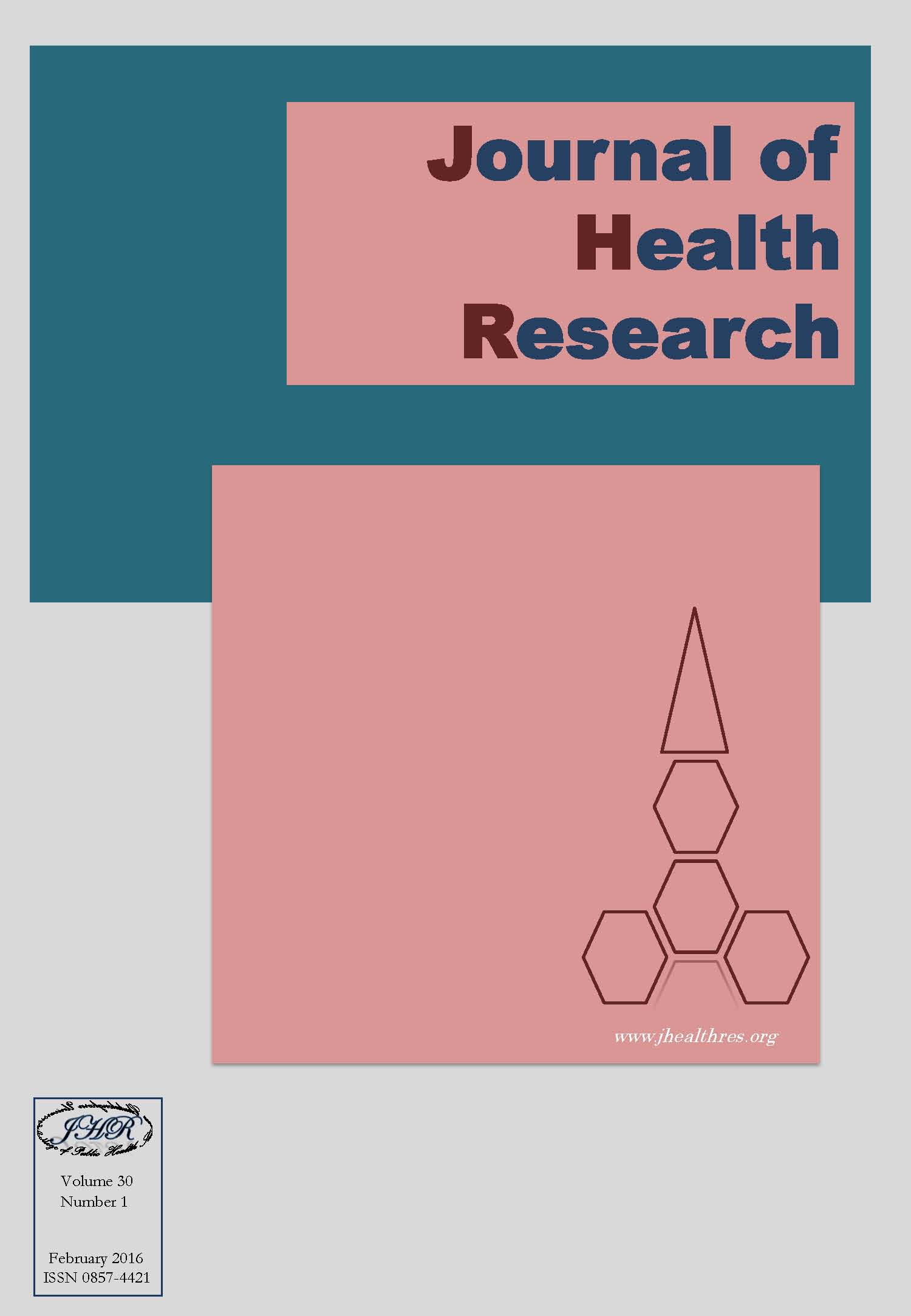Predictive Factors for Research Utilization in Nursing Practice among Professional Nurses, Regional Hospitals, Thailand
Keywords:
Predictive factors, Research utilization, Nursing practice, Professional nurses, ThailandAbstract
Background: Research utilization in nursing practice (RUNP) is a judgmental activity of nurses in using an applicable specific research finding in their practice to promote optimal clinical care. Although research utilization is crucial for improving quality of patient care, there exists a research-practice gap. A number of papers have expressed concern about barriers to research utilization. However, little is known about the predicting factors of research utilization in nursing practice.
Methods: The purposes of this predictive correlational study were to explore RUNP and identify predictive factors of RUNP among professional nurses based on a selected part of the Johns Hopkins Nursing Evidence Base Practice Model and a literature review. Participants were 447 registered nurses recruited from five regional hospitals selected by multistage sampling from all regional hospitals under the Jurisdiction of the Thailand Ministry of Public Health. Data were collected based on five self-reported questionnaires: Personal Data Form, Research Utilization in Nursing Practice Scale, Research Climate Scale, Support Resources Scale, and Staffing Scale. Content validity and reliability were tested to confirm the psychometric properties of the instruments. Four-hundred forty completed questionnaires were analyzed with descriptive statistics, bivariate analysis, and multiple linear regression analysis.
Results: Participants were between 23–59 years old (Mean = 39.41, SD = 8.64) and educated at the bachelor’s level (86.14%). Some had research experience (37.73%), and were employed in nursing for .83 to 37 years (Mean = 16.13, SD = 8.44). Their RUNP was classified at the moderate level. Research climate, support resources, staffing, and research experience had significant moderate positive relationships with RUNP (r = .440, .430, .376, and .316 respectively, p < .01). Education level had a weak positive relationship with RUNP (r = .158, p < .01). The significant predictors in multiple regression were research experience, support resources, and research climate (β=.273, .256, and .244 respectively, p < .01), and accounted for 30.40% of total variance in RUNP (R2 = .304, p < .01).
Conclusion: To promote RUNP among nurses requires research experience, support resources, and creation of a research climate. This study suggests that administrators of hospitals should consider and manage these significant factors to increase RUNP among nurses.






